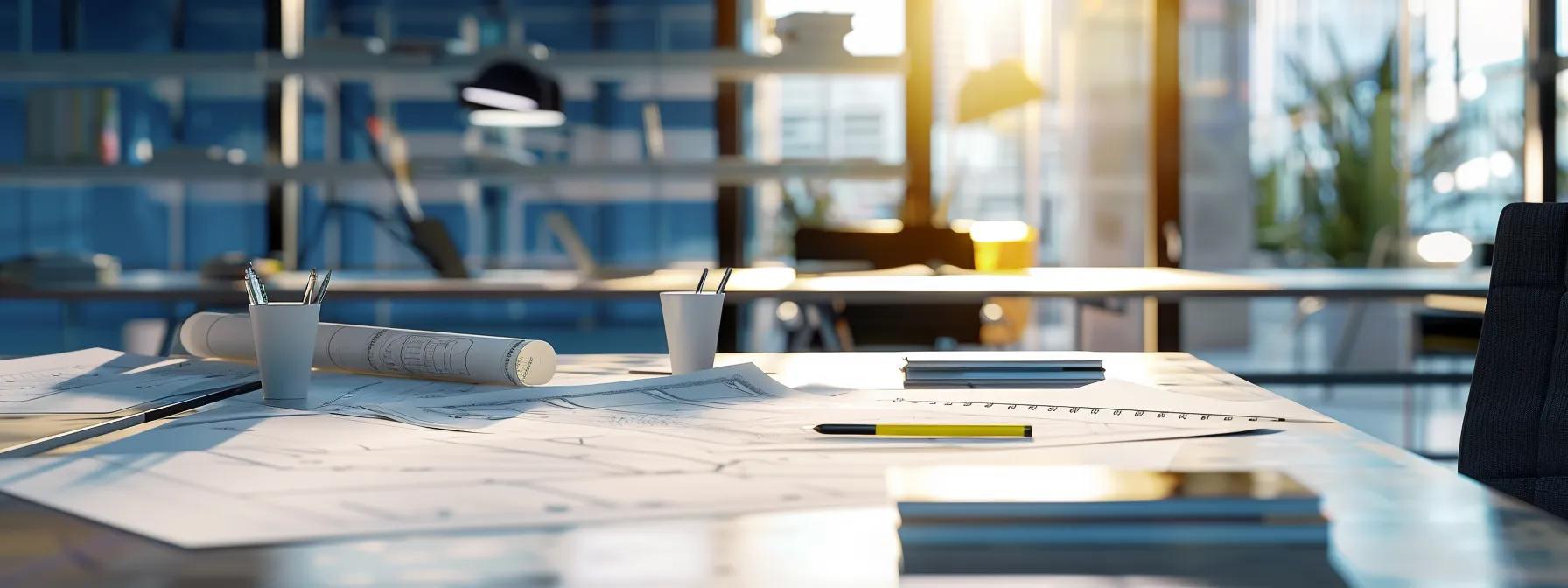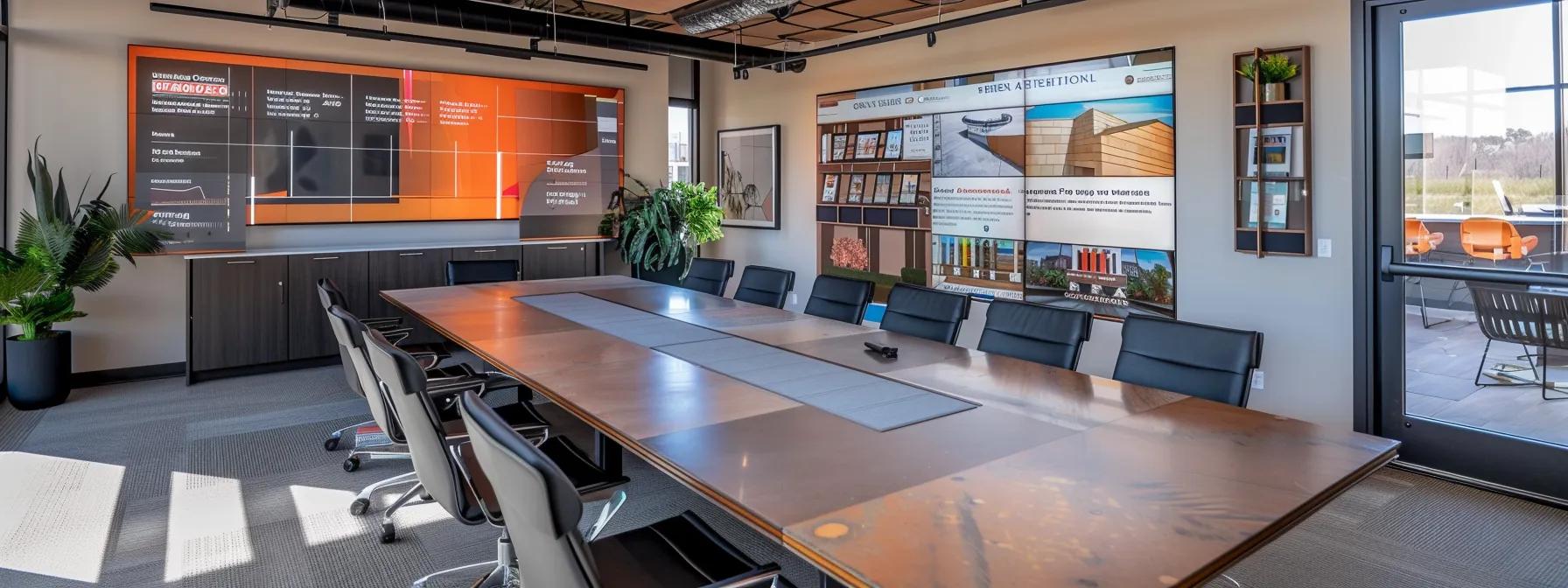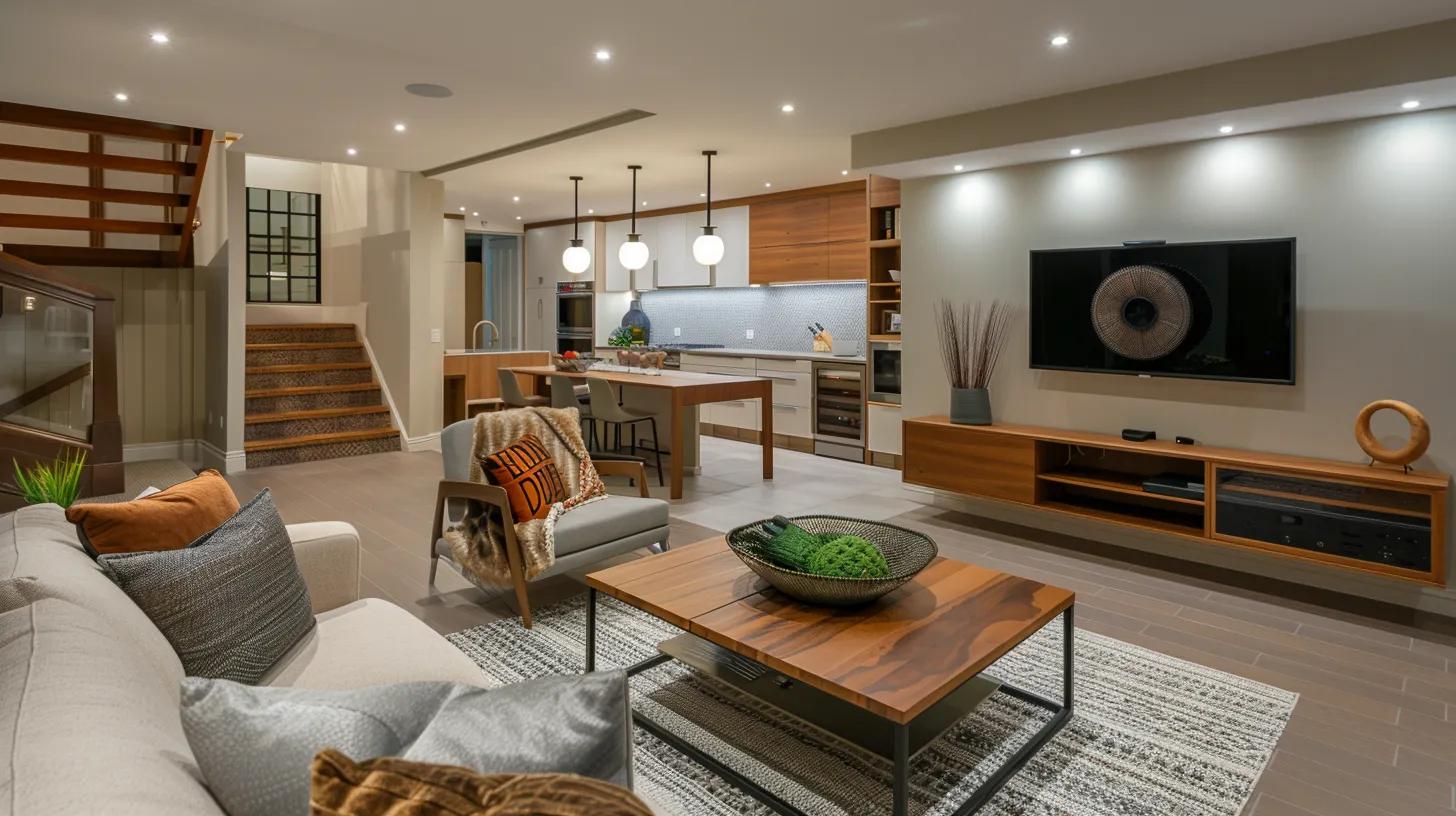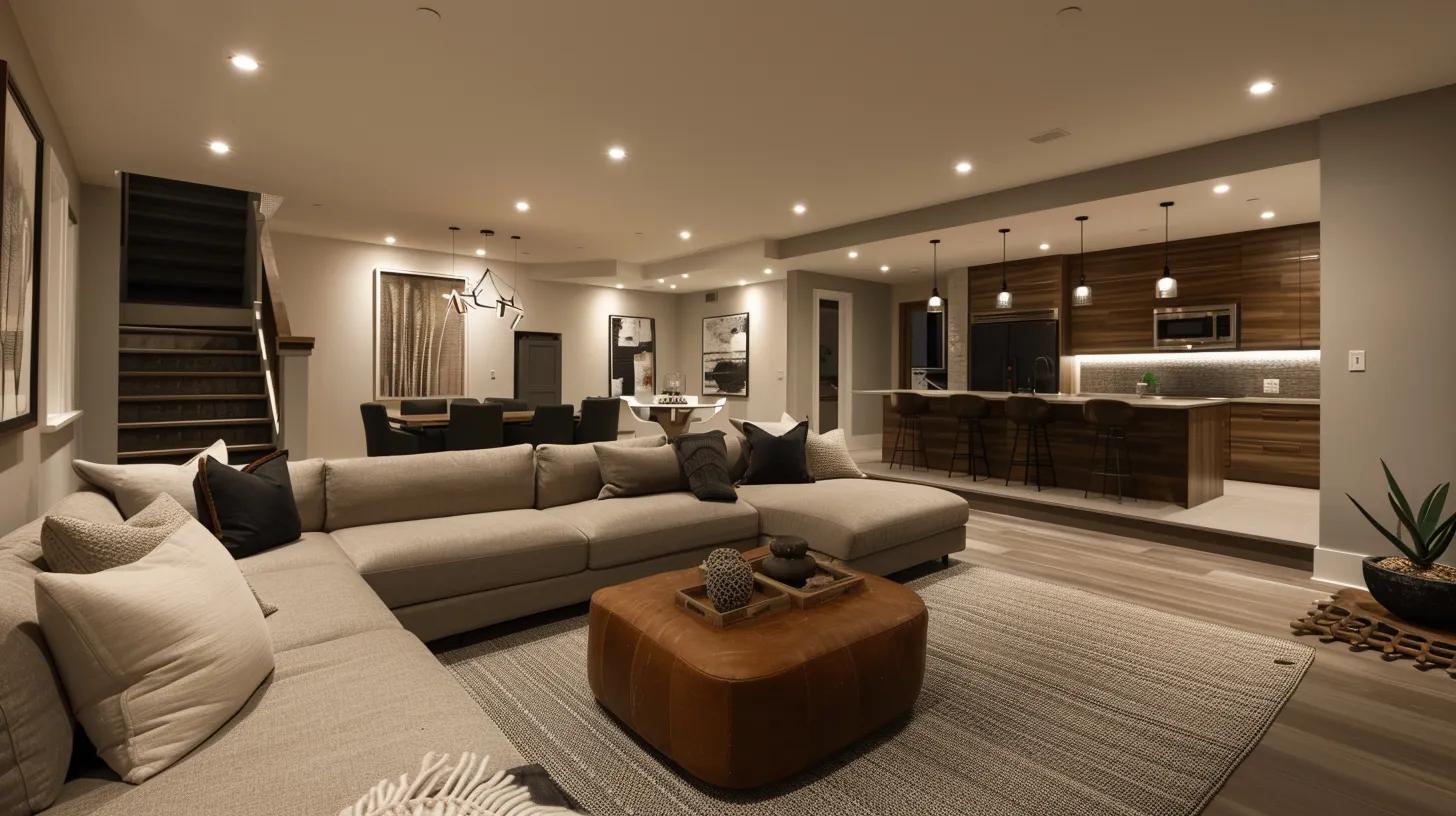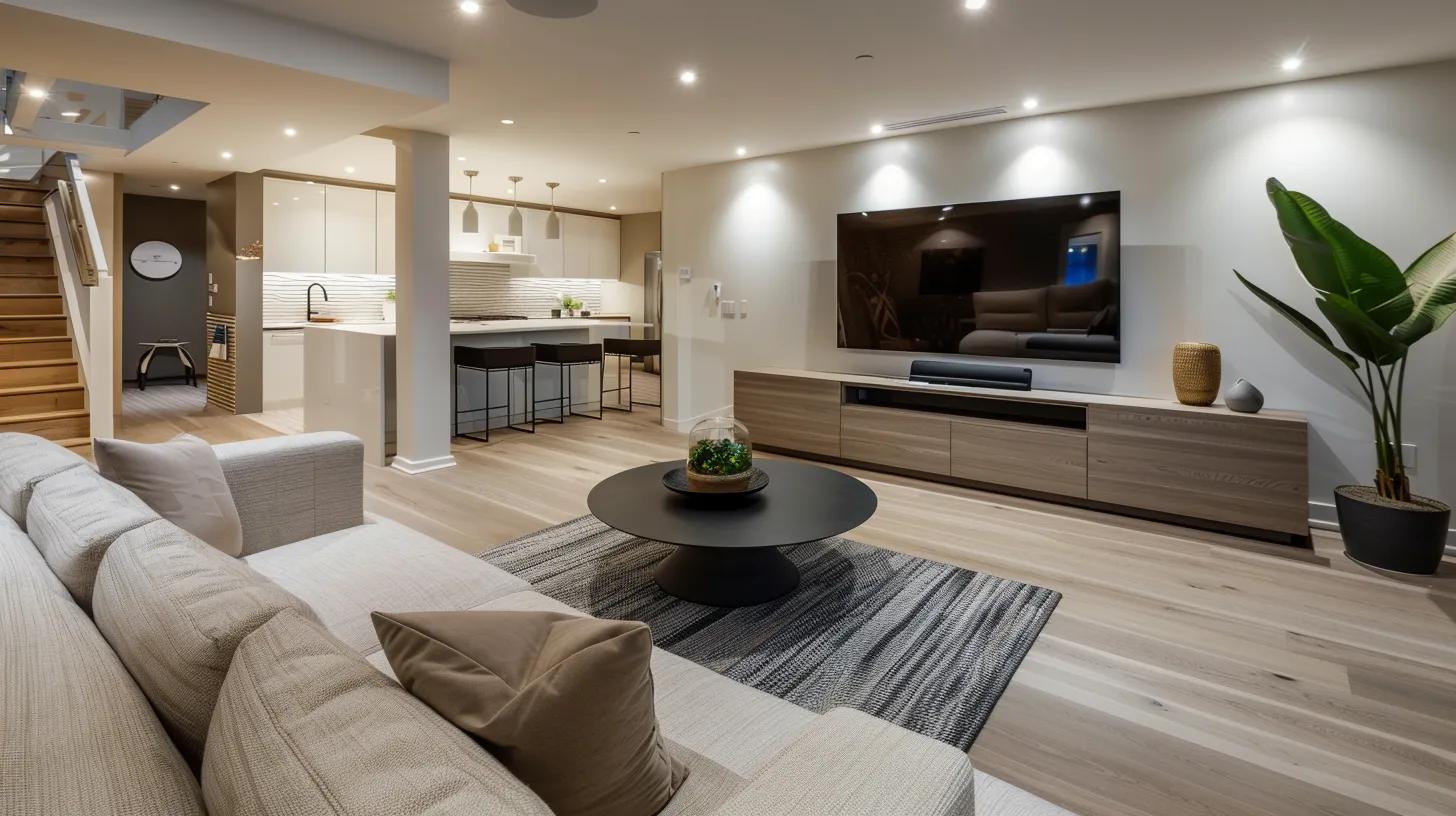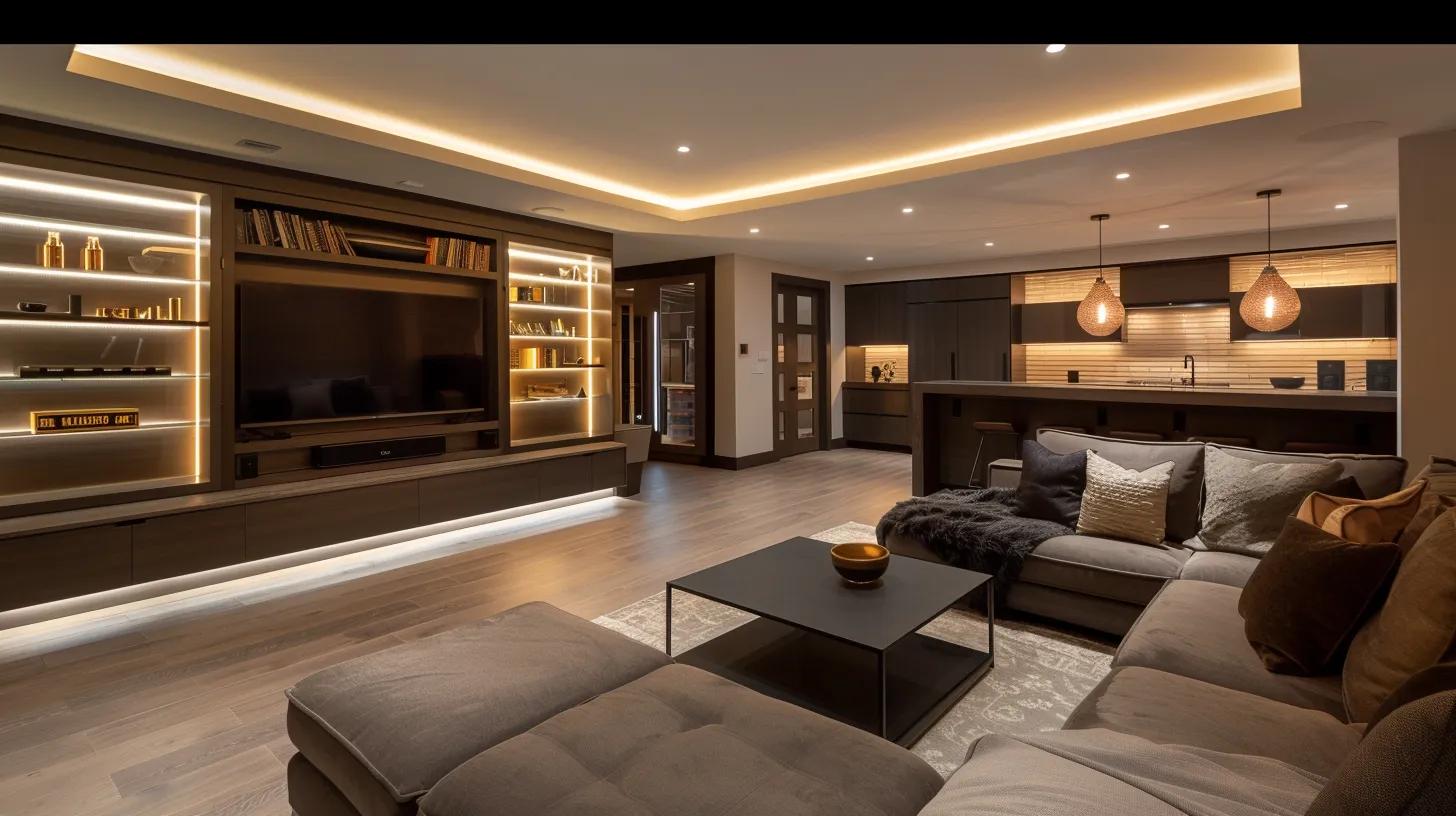
Reliable Custom Deck and Patio Building From Busy Builders
Building a custom deck or patio is not just about enhancing the look of your outdoor living space—it’s about creating an extension of your home that offers durability, functionality, and aesthetic appeal. Homeowners in Des Moines, Iowa and surrounding areas are increasingly looking for reliable contractors who understand the building codes, design trends, and construction techniques required to build these outdoor structures. With decades of experience in general contracting and remodeling, our company has been servicing the area since 2020, delivering high-quality custom deck construction, pergolas, and patio designs that blend traditional craftsmanship with modern style. Whether you are trying to compare different materials, stick to a budget, or add innovative lighting solutions to accent your home improvement project, making informed decisions is essential to achieving your dream outdoor space. Incorporating factors like wood varieties, composite options, and sustainable materials can transform a simple deck into a multi-functional area that is perfect for entertaining, relaxing, and even upgrading your kitchen or porch ambiance. This article explores the essential steps in planning and maintaining your custom deck or patio while integrating expert guidance through each phase of the process.
Let’s explore the process, starting with the right materials for your deck and patio.
Choose the Right Materials for Custom Decks and Patios
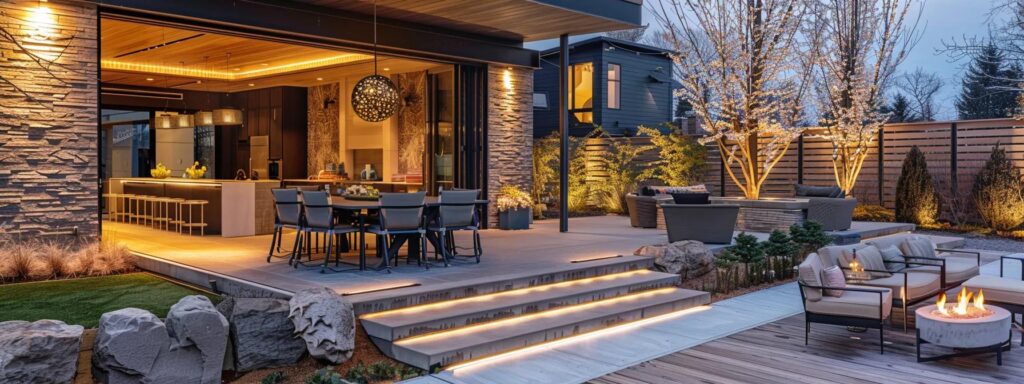
Choosing the right materials is the cornerstone of a successful custom deck or patio project. The materials you select affect not only the initial appearance of your outdoor space but also its durability and ease of maintenance. Homeowners often debate between natural wood, composite materials, and stone options based on aesthetics, cost, and long-term performance under varying weather conditions like rain and sun exposure in Iowa climates. Leading contractors suggest that both functional and aesthetic factors should guide material selection, ensuring that every choice not only complements your home design but also meets the building code and safety standards.
Explore Various Wood Options for Your Outdoor Spaces
Wood remains a popular choice for custom decks due to its natural beauty and warmth. Options like pressure-treated pine, cedar, and redwood offer unique textures and colors. Cedar, for example, is widely appreciated for its resistance to decay and natural insect repellant properties, making it ideal for regions with high humidity and rain. Redwood, on the other hand, is valued for its rich color and stability, though it requires more upkeep to maintain its appearance. In addition to traditional lumber, reclaimed wood is emerging as an eco-friendly alternative that conveys a story and character to your patio. Each wood type comes with different price points and maintenance demands, so homeowners should consider both their budget and long-term maintenance goals. Detailed buyer guides from the National Wood Flooring Association support that proper sealing and staining can extend the life of wooden decks by up to 50%, ensuring both aesthetics and structural integrity.
Consider Composite Materials for Low Maintenance Needs
Composite decking is designed to mimic the look of natural wood while offering enhanced durability and lower maintenance requirements. Made from a blend of wood fibers and recycled plastics, composites are resistant to rot, mold, and insects. They are particularly effective in areas where rain is a frequent occurrence because they require no periodic sanding or staining. Studies have indicated that composite decks can maintain their appearance for over 25 years with minimal upkeep compared to traditional wood decks, where annual maintenance is common. Homeowners looking for a long-term, cost-effective solution find composites ideal for a busy lifestyle with little time dedicated to routine upkeep. Although the initial cost may be higher, the ease of cleaning and the prolonged lifespan often justify the investment.
Evaluate Eco-Friendly Choices for Sustainability
Sustainability has become a major consideration for modern home improvement projects. Eco-friendly decking materials not only reduce environmental impact but may also qualify for green building certifications. Bamboo, for instance, is a renewable resource known for its strength and rapid regeneration. Recycled plastics and composites manufactured with post-consumer waste help minimize landfill contributions. Furthermore, eco-friendly options such as sustainably harvested wood and low-VOC sealants protect both the environment and your family’s health. A peer-reviewed study published in the Journal of Cleaner Production (Li et al., 2020) analyzed the life cycle impacts of various decking materials and determined that recycled composite decking had a 30% lower carbon footprint compared to traditional hardwood. The study also revealed that by choosing eco-friendly materials, homeowners could contribute significantly to conservation efforts while enjoying a sturdy and stylish outdoor deck. This research reinforces the concept that environmentally responsible choices can coexist with design innovation and durability, making sustainable options a compelling choice for forward-thinking homeowners.
Analyze Stone and Paver Selection for Patios
Stone and pavers offer a timeless look for patios that are both durable and low maintenance. Materials such as travertine, slate, and concrete pavers are popular choices because they withstand heavy foot traffic and harsh weather conditions. They also provide endless design possibilities—from classic, natural stone arrangements to modern geometric patterns that add a contemporary edge. When selecting stone or pavers, it is essential to consider the local climate in Iowa, where freeze-thaw cycles can impact material integrity. Sealing and proper base preparation can prevent surface cracking and ensure longevity. Homeowners should compare the aesthetic benefits and practical performance of different paver options to find the perfect balance for their space.
Inspect Durability of Different Surface Finishes
The longevity of your custom deck or patio greatly depends on the surface finishes used. Sealants, stains, and paints protect against moisture, UV rays, and temperature fluctuations. Surface finishes must be chosen based on the underlying material; for example, natural wood requires a finish that penetrates deeply to guard against decay, while composites often benefit from a UV-resistant coating to avoid fading. Research shows that using high-quality finishes can extend the lifespan of deck surfaces by up to 20 years, significantly reducing the frequency of repair or replacement. Homeowners must evaluate the strength of these finishes under real-world conditions—such as prolonged rain and direct sunlight—to choose a product that will maintain both the function and beauty of the deck over time.
Understand Color Varieties for Aesthetic Appeal
Color selection plays a critical role in the overall look and feel of your deck or patio. The right color can complement your home’s exterior and create a cohesive outdoor environment. Many homeowners in Des Moines prefer neutral tones that blend with the natural surroundings, while others opt for bold hues to create a standout feature. Color consistency is important not only for the initial visual impact but also for maintaining the surface’s appearance over time. Certain finishes are prone to fading or discoloration when exposed to harsh sunlight, so it is essential to verify that the chosen color retains its vibrancy. With modern developments in decking stains and sealants, companies now offer long-lasting color options that enhance wood‘s natural grain and protect against weather-induced degradation.
Design Your Ideal Backyard With Expert Guidance
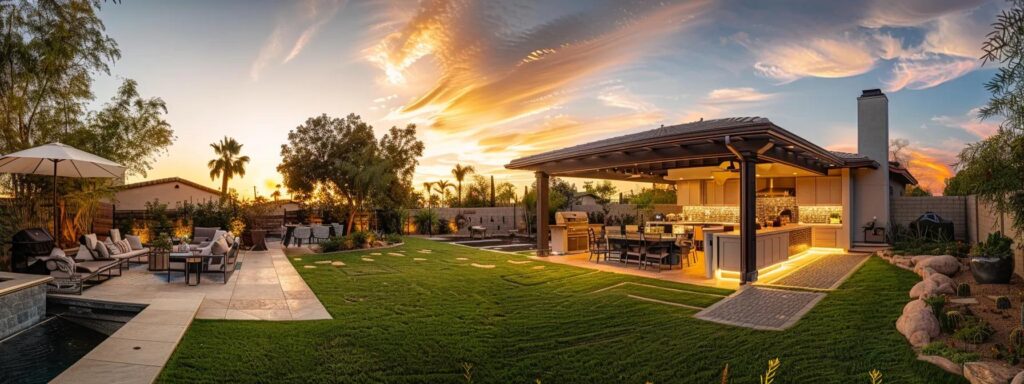
Designing your ideal backyard involves a thoughtful integration of various elements that balance functionality and aesthetics. Expert guidance is essential to map out your outdoor space optimally, ensuring that every square foot is used efficiently for both leisure and practical purposes. An effective design begins with a clear understanding of your lifestyle needs—whether it’s entertaining guests, enjoying a quiet retreat, or even accommodating a home office in your backyard. By collaborating with experienced designers and contractors, homeowners can seamlessly integrate features like patios, custom decks, pergolas, and outdoor kitchens into a cohesive layout that complements the existing structure.
Map Out Your Outdoor Space for Optimal Layout
Mapping out your outdoor space involves detailed planning and measurements. A well-thought-out layout accounts for existing structures, solar orientation for optimal lighting, and accessibility from the main house. Using scaled drawings or digital design tools, experts can create a layout that accommodates various functions such as dining, lounging, and entertaining. For instance, incorporating features like a paved pathway or a strategically placed firepit can enhance connectivity while promoting safety and accessibility. Detailed planning ensures that every element—from stairs to seating areas—is positioned for maximum enjoyment and use, providing a blueprint that meets local building codes and design trends.
Collaborate on Creative Deck and Patio Designs
Collaboration with professional designers opens up creative possibilities that homeowners might not have considered on their own. Expert guidance enables you to explore innovative design ideas such as multi-level decks, integrated lighting systems, and built-in planters that add greenery and texture to your space. Custom deck construction involves selecting materials, finishes, and design elements that reflect personal style while ensuring longevity and functionality. Involving a contractor early in the planning process allows for a seamless integration of these creative ideas with practical construction considerations like drainage, load-bearing requirements, and safety standards. This collaborative approach often leads to unique backyard designs that enhance curb appeal and overall home value.
Integrate Landscaping Elements With Your Build
Your deck or patio is enhanced dramatically when paired with complementary landscaping. By integrating elements such as flower beds, shrubs, trees, and lighting, your outdoor space can transform into an inviting oasis. Thoughtful landscaping not only improves the visual appeal but also contributes to energy efficiency and thermal comfort. For example, deciduous trees can provide shade in the summer and allow sunlight in during the winter, reducing cooling costs. Moreover, landscaped areas around a deck can improve privacy and create a more intimate setting for gatherings, making the space multi-dimensional and engaging. Professional landscapers can work alongside contractors to synchronize the deck design with the garden layout, ensuring that both elements echo a unified aesthetic vision.
Select Functional Features for Enjoyment
Choosing features that enhance the functionality of your backyard is as important as the visual design. Functional additions such as built-in seating, outdoor kitchens, fire pits, and pergolas elevate the usability of your space, transforming it into a living area that adapts to various activities. For instance, a pergola can not only define an outdoor dining area but also provide shade, while built-in seating arrangements create comfortable spaces that encourage relaxation and conversation. Integrating these features with lighting systems that work well for both soft ambiance and task illumination can increase the overall utility and enjoyment of the backyard. Every addition should be designed with both aesthetics and practical needs in mind to ensure that the finished space is both beautiful and highly functional.
Balance Style With Practicality in Design Choices
Finding the perfect balance between style and practicality is key to designing an outdoor space that stands the test of time. While bold design choices can make a strong visual statement, they must be tempered with practical considerations such as durability, safety, and maintenance. For example, selecting non-slip surfaces for decks and patios is a functional solution that does not compromise on appearance. Practicality in design also involves choosing materials that are readily available and suited to the local environment, ensuring that the space is resilient against weather conditions typical of Iowa. Engaging with a contractor who understands these dynamics will ensure that your custom deck or patio not only looks great but also offers sustained performance and value to homeowners.
Incorporate Outdoor Lighting and Fixtures
Outdoor lighting is essential both for safety and for setting the desired ambiance. Effective lighting can highlight architectural features, create focal points, and even extend the usability of your deck or patio into the evening hours. Options include LED pathway lights, recessed deck lighting, and feature fixtures like lanterns or string lights. Integrating lighting into your design requires a careful balance to avoid glare while ensuring adequate illumination. Contractors with expertise in outdoor electrical work can help install lighting systems that are energy-efficient and visually appealing. Moreover, lighting choices should complement the overall design, using styles that enhance the space while remaining functional and easy to maintain.
Find Reliable Contractors for Your Project

Finding the right contractors is crucial to ensuring that your custom deck and patio project is executed flawlessly. Homeowners benefit from selecting local contractors with a proven track record in deck construction, home improvement, and general contracting. In Des Moines, Iowa, experienced builders who adhere to building codes and prioritize customer satisfaction are essential partners. To navigate through the vast pool of potential contractors, it is recommended to conduct thorough research, check credentials, and compare estimates.
Research Local Builders With Proven Track Records
Researching local builders involves looking up reviews, case studies, and testimonials from previous customers. Trusted online platforms, local business directories, and word-of-mouth recommendations from friends or family can provide insights into a contractor’s reputation. A contractor with a 5-star rating over several years and documented certifications often indicates reliability and quality workmanship. Additionally, examining past projects through photo portfolios or in-person visits to completed decks or patios helps assess their capabilities. Statistical data from local construction associations shows that contractors with a solid track record tend to complete projects on time and within budget, further underscoring the importance of thorough research.
Verify Credentials and Customer Reviews
Verification of credentials ensures that the chosen contractor complies with local building codes and holds all necessary licenses and insurance. Requesting documentation of certifications, permits, and liability insurance is a standard part of the selection process. Homeowners should also ask for references to gain firsthand knowledge of previous experiences. Customer reviews on platforms like Better Business Bureau and local review websites offer valuable insights into the contractor’s communication, reliability, and overall project quality. Reviews often highlight both the strengths and pitfalls of past projects, providing a comprehensive picture of what you can expect from your contractor. Such due diligence minimizes risk and enhances project success.
Interview Prospects to Understand Their Approach
Once a shortlist of potential contractors is compiled, setting up interviews is the next step. Personal interviews allow homeowners to discuss design ideas, timelines, and budget constraints directly with the builder. Through face-to-face interactions, you can evaluate the contractor’s expertise, professionalism, and willingness to incorporate your vision into the project. In these interviews, ask about project management strategies, communication frequency, and how unforeseen issues are addressed on-site. The contractor’s ability to clearly explain processes, discuss materials, and outline a detailed plan is a strong indicator of their commitment to quality and customer satisfaction. This direct interaction greatly reduces surprises during construction and helps in building trust with your builder.
Discuss Budgeting and Timelines in Detail
Clear discussions about budgeting and project timelines are critical components of a successful deck or patio build. An experienced contractor should provide a detailed written estimate that breaks down material costs, labor fees, and contingency expenses for unexpected issues. Discussing timelines in advance ensures that every phase—from planning and design to construction and finishing touches—is completed within an agreed timeframe. Homeowners should establish milestones and include clauses for delays due to weather or other uncontrollable circumstances. Transparent budgeting discussions help manage expectations and provide financial clarity, ensuring that the project is completed without base surprises.
Get Written Estimates for Clear Comparisons
Obtaining written estimates from multiple contractors is a vital step. These estimates should detail the scope of work, materials to be used, and payment schedules. A side-by-side comparison of these written estimates not only reveals the best value for money but also exposes any discrepancies or lack of detail from certain contractors. This process enables homeowners to make informed decisions based on both qualitative and quantitative criteria. A clear written estimate serves as a binding contract that protects both parties, ensuring a smooth project execution. By comparing estimates, you can select a contractor who best meets your design vision, budget constraints, and quality standards, ultimately leading to a hassle-free construction experience.
Plan the Construction Process Efficiently

An efficient construction process is the backbone of successful custom deck and patio projects. A well-organized construction timeline ensures that every step—from site preparation to final finishing—is executed smoothly while minimizing disruptions to your daily life. Homeowners benefit from an approach that includes detailed planning, clear communication, and constant monitoring of the building process. This proactive planning mitigates risks associated with delays due to weather, supply chain issues, or unexpected challenges on site.
Outline a Step-by-Step Building Timeline
Establishing a step-by-step timeline is critical for every custom construction project. Initially, contractors must conduct a comprehensive site survey and obtain all necessary permits, ensuring compliance with the local building code. The timeline progresses with the demolition or preparation of the existing space, followed by the installation of foundational elements such as footings and support structures. Subsequent phases include framing, surface installation, and finishing details like railing and lighting. Each stage requires specific quality controls testing and inspections, ensuring that work meets both safety standards and homeowner expectations. Homeowners should be provided with a detailed schedule outlining start and finish dates for each phase, with built-in buffers to account for potential delays.
Prepare Your Site for Construction Safety
Safety during construction is paramount. Before any physical work begins, a detailed plan to prepare the site must be implemented. This includes securing the area, notifying neighbors of potential disruptions, and ensuring proper signage and barriers are in place. The site should be cleared of any debris, and utilities must be marked to avoid damage during excavation. Contractors also ensure that safety protocols are followed rigorously on-site by all workers, contributing to a hazard-free environment. In addition to these physical measures, scheduling regular safety inspections helps guarantee that the project not only proceeds on time but also maintains a high standard of onsite safety. Adhering to OSHA guidelines and local construction safety regulations is non-negotiable, ensuring the wellbeing of all personnel involved.
Communicate Regularly With Contractors
Regular communication between homeowners and contractors is vital for streamlining the construction process. Frequent meetings or progress reports ensure that everyone stays on the same page, and any emerging issues can be addressed swiftly. Digital tools such as project management software or mobile apps allow real-time updates, photo documentation of progress, and a clear record of decisions made during the project. Establishing a consistent communication schedule—be it daily or weekly updates—helps maintain momentum and keeps the project aligned with the established timeline. Enhanced communication reduces misunderstandings and builds trust, resulting in fewer delays and a smoother overall execution.
Monitor Progress and Address Issues Promptly
Active monitoring is a key aspect of an efficient construction process. Homeowners are encouraged to conduct regular walkthroughs and discuss project progress with the contractor. Any deviations from the original plan must be documented and resolved immediately. In cases where issues such as material shortages or unexpected weather delays occur, prompt adjustments to the plan help keep the project on track. Establishing a clear process for reporting and managing issues ensures that any potential setbacks are mitigated quickly, and the project continues with minimal interruption.
Keep an Eye on Weather Conditions Impacting the Build
Weather can play a significant role in outdoor construction projects. Contractors must continuously monitor local weather forecasts to plan for rain, wind, or extreme temperatures, all of which can affect both safety and the quality of work. Proactive planning might include rescheduling certain tasks, securing materials, or implementing temporary coverings to protect work in progress. By adapting the construction timeline in response to ongoing weather conditions, contractors can ensure that the craftsmanship isn’t compromised. This level of attention to environmental factors assures homeowners that their project is managed with flexibility and expertise, ultimately resulting in a durable and high-quality deck or patio.
Maintain Your Custom Deck and Patio After Completion
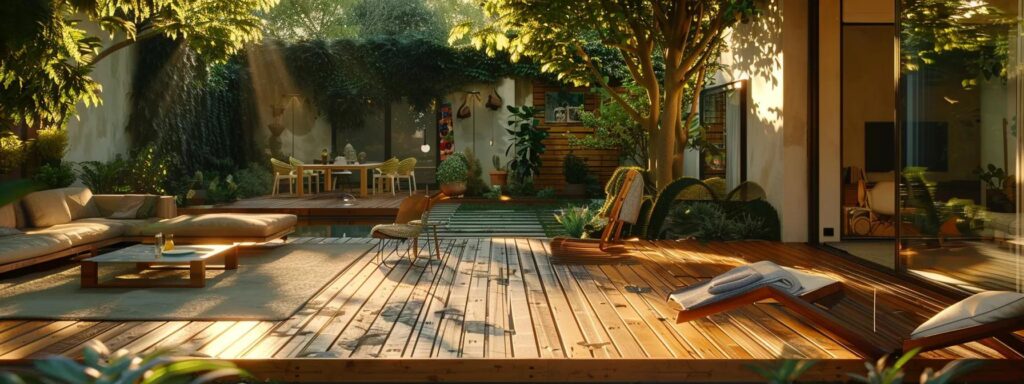
Once your custom deck or patio has been built, maintaining it properly is key to preserving its beauty, functionality, and structural integrity. Routine maintenance ensures that your investment withstands the test of time and varying weather conditions such as rain, sun, and snow. A regular maintenance schedule should include cleaning, inspections, protective treatments, and timely repairs to prevent minor issues from becoming costly problems. With proper upkeep, a deck can enhance your outdoor living spaces for decades, continuing to provide a safe and attractive area for entertaining and relaxation.
Schedule Routine Cleaning for Longevity
Routine cleaning is essential to prevent the buildup of dirt, mold, and debris on deck surfaces. Homeowners should use appropriate cleaning solutions that respect the material—using gentle, wood-safe detergents for natural wood or specially formulated cleaners for composites. Techniques such as power washing at low pressure or manual scrubbing help maintain the subtle beauty of your deck while also preparing the surface for any future sealant or stain applications. Regular cleaning not only keeps your deck looking fresh but also extends its lifespan by mitigating the damaging effects of pollutants and moisture.
Inspect for Signs of Damage After Seasonal Changes
Seasonal inspections are critical to identify any damage that may have occurred during harsh weather cycles. After winter’s freeze-thaw cycles and spring rains, it is advisable to perform a thorough inspection for issues like loose boards, damaged fasteners, or signs of rot in wooden decks. Early detection of minor damages can lead to prompt repairs that prevent further deterioration. Homeowners should develop a checklist that includes drainage conditions, surface wear, and structural integrity assessments. This proactive approach to maintenance helps avoid costly repairs and ensures that the outdoor space remains safe for family and guests.
Treat Surfaces to Protect Against Elements
Applying protective treatments such as sealants, stains, or paints forms a crucial part of deck maintenance. These treatments act as a barrier against moisture, UV rays, and temperature fluctuations, protecting your deck from the harsh impacts of weather. Experts recommend applying a high-quality sealant at least once a year, especially in regions with significant seasonal variations. Research published in the Journal of Building Engineering (Nguyen et al., 2019) highlights that decks treated with advanced sealants can see an improvement in longevity by up to 40%, with fewer occurrences of surface degradation and splintering. The study documents that regular maintenance involving surface treatments has a statistically significant effect on delaying the need for complete deck replacement, which is particularly beneficial for costly custom builds.
Revitalize Appearance With Resurfacing Options
Over time, even the best-maintained decks may begin to show signs of wear that can be revitalized through resurfacing. Depending on the material, resurfacing might involve sanding, re-staining, or even applying a new layer of composite overlay. These processes help restore the original luster and functionality of your deck or patio, contributing to both safety and aesthetic appeal. Homeowners should consult with their contractor to determine the best approach for resurfacing based on the age and condition of the structure, ensuring that the update harmonizes with the original design while addressing any underlying wear or damage.
Prepare for Regular Maintenance Tasks
Planning for regular maintenance tasks means setting aside discretionary time and budget in your annual home improvement schedule. Routine tasks include not only cleaning and inspections but also minor repairs such as replacing worn-out fasteners or reattaching loose railing components. Maintaining an organized schedule for these tasks allows homeowners to mitigate potential hazards and keep the deck or patio area consistently inviting. Detailed checklists, such as those provided by consumer home improvement groups, can serve as guides to ensure that no critical aspect of maintenance is overlooked. This systematic approach to upkeep ensures that your custom deck and patio continue to deliver both beauty and functionality through years of use.
Maximize Your Outdoor Space for Entertaining

Maximizing your outdoor space for entertaining is an integral part of enjoying your custom deck or patio. The right furniture arrangements, lighting, and additional features transform your outdoor area into an inviting oasis perfect for hosting guests, family gatherings, and even casual daily use. Homeowners who plan their space with entertainment in mind focus not just on the construction but on creating an ambiance that enhances social interactions. Thoughtful design and functional planning play a major role in achieving this, ensuring that the space remains comfortable, safe, and stylish even during extended use and varying weather conditions.
Create Inviting Seating Arrangements for Guests
Inviting seating arrangements are central to any successful outdoor entertaining space. Arranging furniture in a way that promotes conversation while still offering personal comfort can be achieved with a mix of built-in benches, modular seating options, and portable chairs. Homeowners can design the seating layout to align with the focal points of the area, such as a fire pit or a scenic view, ensuring that guests are naturally drawn to gather together. Upholstered outdoor furniture and weather-resistant cushions not only withstand elements like rain and sun but also add an extra layer of comfort. Detailed design guides from leading home improvement resources stress that planning the seating layout should incorporate both form and function, ensuring an optimal balance between aesthetics and practicality.
Add Lighting Features for Nighttime Use
Outdoor lighting is a game changer when it comes to extending your deck’s usability into the evening hours. Strategic placement of lighting features, such as recessed deck lights, solar-powered fixtures, and string lights, creates an inviting atmosphere and enhances the overall design. Lighting not only serves the functional purpose of safety and navigation but also elevates the mood for social gatherings by casting warm glows and highlighting key architectural elements. For instance, installing LED pathway lights along the perimeter increases safety during nighttime events and makes the space visually impressive. Home improvement studies demonstrate that well-lit outdoor areas contribute to higher property values and improve the ambiance for entertainment significantly.
Incorporate Firepits or Grills for Social Gatherings
Firepits and outdoor grills are popular additions that increase the functionality of your deck or patio, making the space ideal for gatherings. A built-in firepit provides a warm, central area where guests can gather during cooler evenings, while an outdoor kitchen or grill area enhances the potential for hosting cookouts. These features have become standard in modern backyard designs, promoting interaction and offering a focal point for social events. The integration of custom deck construction with host-specific amenities like built-in barbeque stations allows homeowners to enjoy multifaceted use of their space. Guidelines from industry experts suggest that incorporating such features not only boosts entertainment value but also raises the overall appeal and practicality of your outdoor living area.
Use Outdoor Accessories to Enhance Comfort
Beyond the main structural features, outdoor accessories can significantly enhance the comfort and style of your deck or patio. Items such as decorative pillows, outdoor rugs, and weather-resistant curtains offer additional personalization and warmth. These accessories help soften the hard edges of wood or composite surfaces and contribute to a homely atmosphere that resonates with your overall design theme. When thoughtfully coordinated, your outdoor accessories create continuity between your indoor décor and the outdoor space, providing a unified look that reflects both comfort and luxury. Many design experts recommend mixing textures and colors to achieve an inviting ambiance that encourages extended socializing and relaxation.
Plan Seasonal Decor for Year-Round Enjoyment
Seasonal decor is the final touch that makes an outdoor space truly feel alive throughout the year. From festive lighting for winter holidays to bright, cheerful accents for summer gatherings, planning for seasonal changes ensures that your deck or patio remains inviting regardless of the time of year. Homeowners can incorporate elements like potted plants that thrive in changing climates, adjustable outdoor umbrellas for sun protection, and interchangeable decorative pieces that highlight seasonal trends. By updating your decor regularly, you not only protect the structure from seasonal damage but also keep it fresh and engaging. This proactive approach emphasizes the importance of ongoing creativity and investment in maintaining a vibrant outdoor living area.
Table: Material Comparison for Custom Decks and Patios
Before moving on to contractor selection, here’s a useful table comparing various materials for deck and patio construction:
| Material Type | Durability | Maintenance Level | Cost Range | Aesthetic Appeal | Sustainability |
|---|---|---|---|---|---|
| Natural Wood (Cedar) | Moderate to High, needs regular sealing | High (annual staining/sealing required) | $$ | Warm, traditional, natural grain | Renewable if sustainably sourced |
| Composite Decking | High, resistant to rot and pests | Low (minimal cleaning required) | $$$ | Modern, uniform, available in various colors | Often made from recycled materials |
| Stone & Pavers | Very high, weather-resistant | Low (occasional cleaning needed) | $$$$ | Elegant, versatile, timeless | Eco-friendly if locally sourced |
| Reclaimed Wood | Variable, depends on source quality | Moderate (may need extra treatment) | $$–$$$ | Unique, rustic, with history | Highly sustainable |
| Eco-Friendly Bamboo | High, naturally resilient | Moderate (requires proper finishing) | $$ | Exotic, sleek, modern | Fast-regenerating |
This table summarizes key attributes that influence how your custom deck or patio performs over time. It serves as a quick reference guide to support your material decision process.
Frequently Asked Questions
Q: How do I choose the best wood for my custom deck? A: When choosing wood, consider natural durability, maintenance needs, and aesthetic appeal. Cedar is popular for its resistance to decay, while redwood offers a rich appearance. Always verify that the wood complies with local building codes. Expert recommendations suggest sealing and staining at least once a year to extend wood lifespan.
Q: What are the benefits of composite decking over natural wood? A: Composite decking is highly durable and resistant to rot, mold, and insects. It requires minimal maintenance compared to natural wood, making it ideal for busy homeowners. Despite a higher initial cost, its longevity and low upkeep often make it more cost-effective in the long run.
Q: What should I expect during the contractor interview process? A: During interviews, discuss your project vision, budget, and timeline. Ask for credentials, past project references, and detailed estimates. Transparency in communication and clear written proposals are key factors in selecting a reliable contractor who aligns with your needs.
Q: How frequently should I maintain my deck or patio? A: Routine maintenance should include annual cleaning, seasonal inspections, and periodic reapplication of protective finishes. It’s important to inspect your structure after harsh weather conditions to address any early signs of wear or damage and schedule necessary repairs promptly.
Q: Can I incorporate modern lighting and accessories into my custom deck design? A: Absolutely. Modern lighting such as LED fixtures, solar-powered bulbs, and integrated pathway lights enhance safety and mood. Outdoor accessories, including comfortable seating and decorative elements, integrate seamlessly with the architectural design, creating an inviting atmosphere for entertaining.
Q: What eco-friendly options are available for deck and patio construction? A: Eco-friendly options include materials like reclaimed wood, recycled composite decking, and sustainable bamboo. These materials offer a reduced environmental footprint while maintaining durability and aesthetic appeal. Advances in material technology and eco-friendly sealants further support sustainable outdoor construction.
Final Thoughts
Custom deck and patio building is a comprehensive process that transforms your outdoor space into a functional living area that combines style, durability, and entertainment value. By carefully selecting high-quality materials, designing with expert guidance, and ensuring efficient project management, homeowners can create backyard retreats that enhance their lifestyle and property value. Reliable contractors with proven experience are key to turning your design vision into a reality. With consistent maintenance and thoughtful planning, your outdoor living space will remain an inviting extension of your home for years to come.

